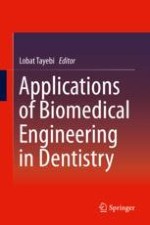2020 | OriginalPaper | Buchkapitel
17. Injectable Gels for Dental and Craniofacial Applications
verfasst von : Mohamed S. Ibrahim, Noha A. El-Wassefy, Dina S. Farahat
Erschienen in: Applications of Biomedical Engineering in Dentistry
Aktivieren Sie unsere intelligente Suche, um passende Fachinhalte oder Patente zu finden.
Wählen Sie Textabschnitte aus um mit Künstlicher Intelligenz passenden Patente zu finden. powered by
Markieren Sie Textabschnitte, um KI-gestützt weitere passende Inhalte zu finden. powered by
